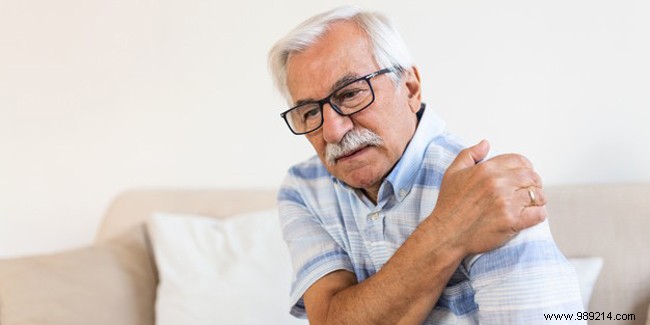
Everyone knows that the fight against aging is a losing battle. But behind this expression hides a more concrete and realistic desire to slow down the body's natural aging process in order to ensure a good quality of life for as long as possible. To achieve this, we must in particular take care of our joints because it is through the body that we remain active and maintain our autonomy. This article tells you why movement is fundamental to slowing the aging of the joints.
We are talking here about normal aging and not about pathological aging which then occurs in connection with a disease and calls for specific care.
The effects of the aging process are first perceived on the surface of the body:wrinkles, white hair, brown spots on the hands, etc. But of course it also affects the organs. Aging is a progressive process whose course varies according to the individuals, their morphology, their experience, their genetics, etc., and, as a result, there is no equivalence common to everyone between the number of years lived and the state of the body. But it has long been shown that healthy lifestyle habits (exercise, diet and quality sleep) benefit anyone who sticks to them and help slow the aging process.
Joints are complex systems made up of several elements:
The aging cartilage presents irregularities and hinders the sliding of the bones between them. The viscosity of synovial fluid tends to decrease with age, which limits the ability to move. Finally, the ligaments and tendons lose their elasticity and become more fragile.
Aging joints can also induce muscle contractures so much so that, in some people, the muscles actually become hard. Gradually, the range of motion decreases. A vicious circle can quickly set in if the person does not react:pain - decrease in activity or even immobility - loss of range of motion - pain - decrease in activity, etc.
Being overweight is an aggravating factor because the joints then bear additional pressure. Simple weight loss can solve part of the problem:10% less weight can improve joint function by up to 30%.
The degradation of joints is favored by muscle loss, called sarcopenia, which begins in everyone from the age of 30:the mass of muscle tissue and the number and size of muscle fibers gradually decrease. The slight loss of muscle strength increases the stress on joints such as the knees.
When a joint remains stationary for too long, the cartilage is poorly irrigated and poorly lubricated. And a prolonged sedentary lifestyle promotes joint degradation and the risk of osteoarthritis. This is why mobility must be maintained as much as possible throughout life! Physical activity is the most natural solution to limit the aging of the joints.
If the targeted objectives are the strengthening of the muscles around the joint and the maintenance of all the "mechanics" of the cartilage, it is not a question of moving anyhow but of adapting the physical activity to the age, physical condition and whether or not there are identified lesions.
The sports generally recommended for the elderly are sports that maintain movement over a certain period of time and in a gentle and adapted way.
Swimming and water aerobics are particularly suitable for overweight people because the buoyancy of the water reduces the pressure exerted on the joints which can thus move more freely.
Cycling, walking, gentle gymnastics and yoga are also very good options. Gymnastics and yoga have in common to work on both muscle toning and flexibility. However, yoga is probably the most complete practice on the list because it invites you to mobilize areas that are rarely mobilized, thus strengthening all the joints when other activities have more targeted actions on the body.
If you want to practice an activity without supervision, that is to say outside of a group lesson and without a coach, always remember to warm up beforehand, even for an activity like walking.
You can maintain a routine 2-3 times a week for 10-15 minutes each time, dedicated to joint maintenance.
To maintain the cervical, a few series of "yes" and "no" with the head will be effective. Do not force it and keep a slow pace, going to the end of the movement each time.
For the shoulders, sit straight on a seat, without leaning on the backrest, raise and lower your shoulders and make circles in one direction and the other.
For the wrists, with your arms stretched out in front of you, rotate your hands in one direction and then in the other.
For the spine, on all fours, you arch your back like a defensive cat does, exhaling and gazing at your navel, then gently hollowing it out looking ahead on an inhale. Alternate the positions with regularity and always in coordination with the breath.
For the hips and knees, legs bent, feet on the ground, you bring one knee to your stomach by gently drawing it with your hands towards you and exhaling. Hold the position for 5 seconds, then lower your foot. Alternate the legs in this way.
Finally, for the ankles, sitting on a chair, your back against the backrest, you extend one leg in front of you and make about ten circles in one direction then in the other. Do the same with the other leg and the other foot.
Always pay attention to your feelings. In case of pain, do not hesitate to seek the advice of a doctor.
The regular activity that you have chosen to do can advantageously be supplemented by a balanced diet and good daily hydration.